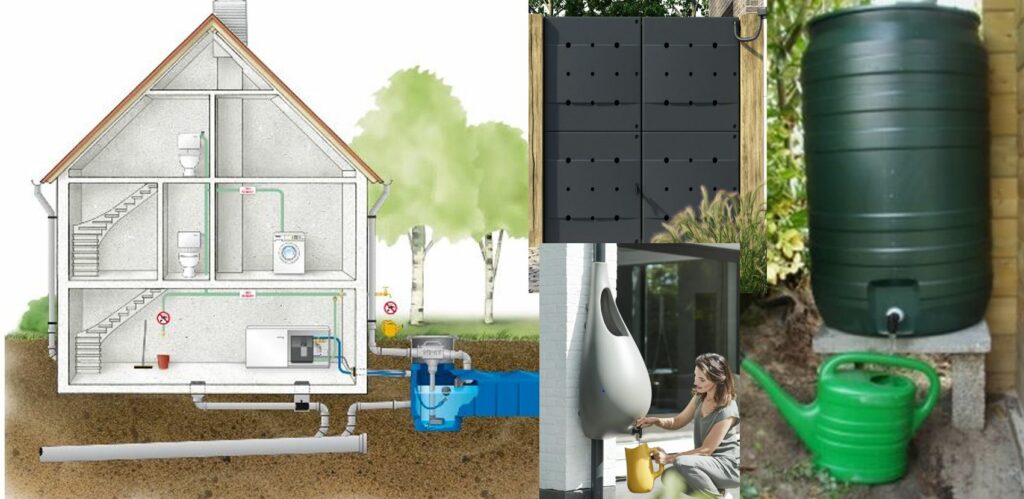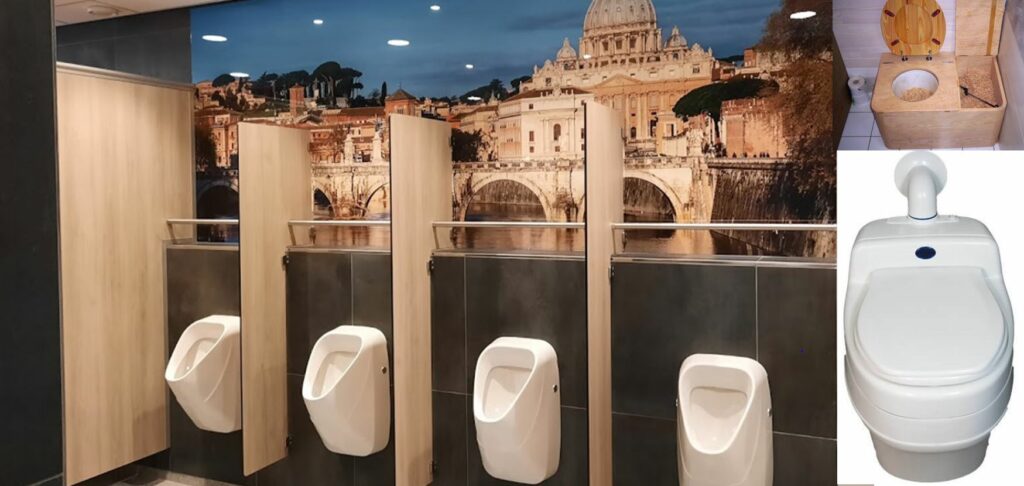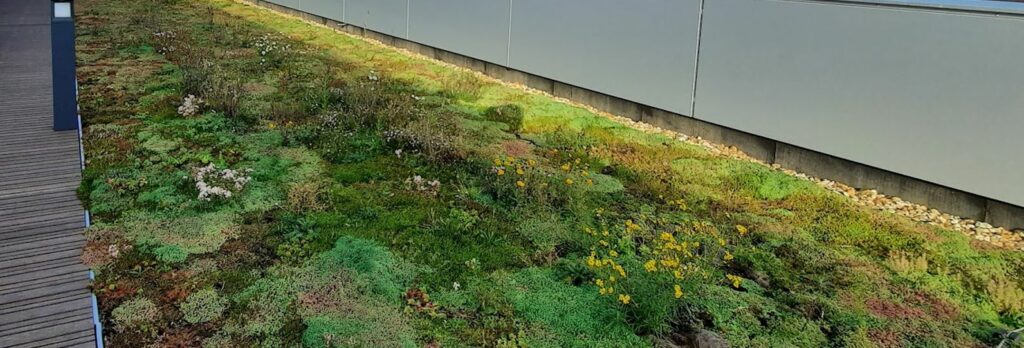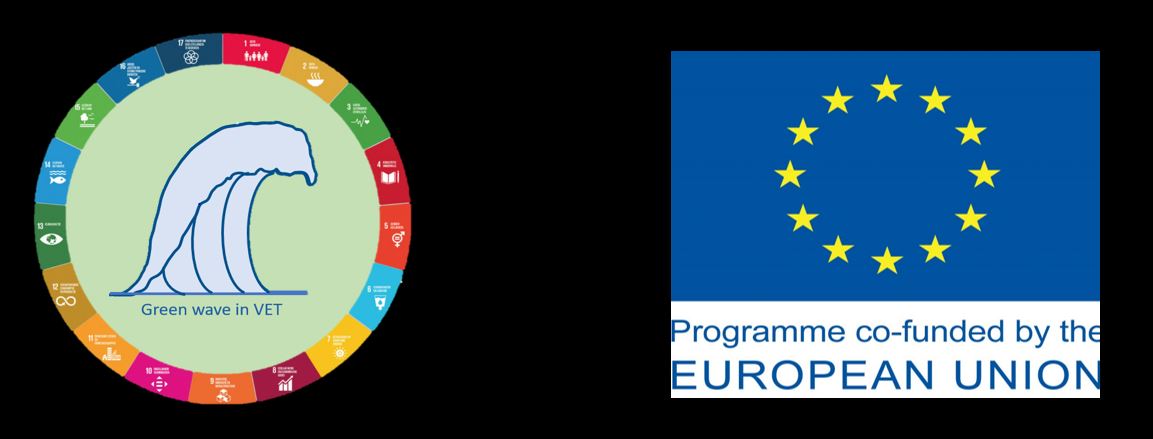< Back to the overview of the SDG’s
The targets for this SDG can be seen here.

Water friendly buiding
Gray water circuit
Sedum roofs
Water collection with rainblocks or rain barrels.
Shower water recovery
Shower warmth regaining
Sensors for urinoirs
Water taps with sensors
Water collection on the roof
Helophytes filters
Nature inclusive building.
Movement senors in toilets

Today, water is still not optimally used. People forget that in some parts of the world water is still very scarce. In the Netherlands
water can be used much more economically, for example by replacing the water for certain activities with rainwater.
How can you save water?
Shower less long
Rather take a shower than fill a bath
Close the tap when you don’t need water when brushing your teeth, shaving
Only run the (dish) wash when the (dish) washing machine is full
Boil in not too much water
Put a watering can next to the tap and fill it with water then run when you don’t need it.
Most toilets have a button for the small and large message. Use that too.
Be frugal with watering the garden
Try to collect rainwater (for the garden / toilets)
Toilets
A variety of agents can be applied to faucets or toilets to reduce water use.
For example, there are toilet systems that limit the water consumption of a toilet to 4 liters per flush. You can then choose whether you rinse for the large or small need.
Even better, a toilet has a flush breaker. This prevents wastage as the flush can be stopped at any time.
Flush as little waste as possible down the toilet so that unnecessary pollution does not occur.

Taps
Install a single lever mixer tap, this ensures a mixture between cold and warm water so that a pleasant temperature comes out of the tap faster.
The water supply can also be interrupted without having to be adjusted again. As a result, less water and energy is lost.
Turn an aerator with flow restrictor on the tap end. This saves you on drinking water consumption. This limiter ensures that there are
less water comes out of the tap, while the water pressure remains the same.
Use green roofs (sedum roofs), these roofs are cooler in the summer and warmer in the winter and can therefore contribute to a better
indoor climate.
Nothing costs more energy than heating water. So be careful with warm water and wash your hands and face with cold water
Shower
Showering uses less water than taking a bath. Do not shower for more than 5 minutes. Nothing costs more energy than heating water. So be careful with hot water.
A standard hand shower or overhead shower uses between 12 and 16 liters of water per minute. With a 10 minute shower that is 120 – 160 liters! Water is not yet scarce in the Netherlands and very cheap compared to other countries. However, to get shower water at a pleasant temperature of 37-38 degrees, we need about 50% cold and 50% warm water, so that means 60 – 80 liters of warm water for 10 minutes of showering!!
Heating 1 liter of cold water to hot water of 60 degrees water costs about € 0.01 with a gas HR boiler. So if you use 60 – 80 liters of warm water for a 10-minute shower, that costs about € 0.60 to € 0.80. For a family of 4 people who shower 365 times a year, that is € 876 – € 168 per year in gas. With longer showers or a shower head that is used even more, that is (much) more.
A good water-saving hand shower or shower head needs 6 – 8 liters of water per minute without loss of comfort, so you can save about 50% on costs. How much water does your shower use? Open the shower faucet as you normally would during a shower and fill a bucket for exactly 1 minute. If it contains more than 8 liters, then you do not have a water-saving shower and replacement is worthwhile, which can be earned back very quickly.
Bath
A bath uses more water than a shower. So choose to shower. Nothing costs more energy than heating water. So be careful with hot water.
Brushing and shaving your teeth
Turn off the tap when brushing your teeth or shaving. Use cold water to rinse or shave.
Rainwater systems and gray water circuits
You can use a gray water circuit, which uses a reservoir that stores rainwater. This method can be used for the connection to the outside tap
and flushing the toilet. With filter systems, the collected water from the gray water circuit can be optimized and toilets can be flushed with it.
Use process water, this is ground or surface water that can be used as a coolant, process medium, solvent or as a means of transport. Due to the diversity of this water, different quality requirements can be set for each function.
Rainwater collected on roofs can be used in homes to flush the toilet, washing machine and outside tap.

In utility buildings it may only be used for toilets.
Storing and using rainwater has three important effects:
• Reducing the use of drinking water
• Reducing the discharge of rainwater into the public sewer system
• Collecting rainwater so that at heavy rainfall there exists less chance for an overlaod of water.

A helophyte filter for wast water

